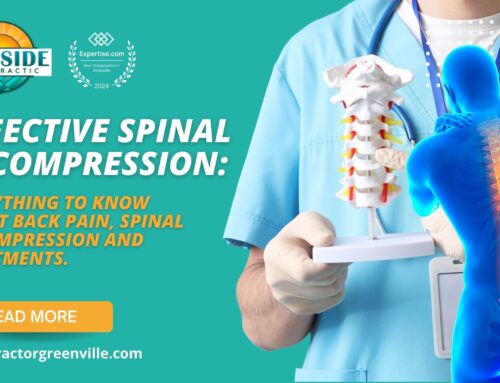Many of my patients ask the question “Do people shrink when they get older?” Even more curiously, does our height vary throughout the day, and what causes it to change? The answer to the first question is “yes,” and it’s all because of our aging spine. But how does this occur?
Gravity Is Relentless…
During the course of any given day, the discs of the spine (the shock-absorbing, sponge-like structures that lie between the vertebrae), absorb or lose water, leading to an increase or a decrease in our height.
This property is called “viscoelastic creep,” and determines our overall height, which can result in a reduction of up to ¾ of an inch in height between morning and the end of the day. Interestingly, 19% of this loss occurs during the first 5 minutes of sitting. (Very little of our total daily loss in height is due to other non-disc soft tissue structures.)
 We can increase our height by lying on our stomach and bending backwards. The optimum time and angle for this “sagging push-up” position is 20 minutes at 20 degrees.
We can increase our height by lying on our stomach and bending backwards. The optimum time and angle for this “sagging push-up” position is 20 minutes at 20 degrees.
This exercise can increase our total spine height 5 mm, of which 2 mm comes from the low back area alone.
[h2]The Research Process and Procedure[/h2]
How did researchers come to this conclusion? One research team instructed a group of 20- to 30-year-olds to start by lying on their backs for 10 minutes. They followed this by sitting in a fixed position for 5 minutes with 10-pound sandbags placed upon their shoulders. Then they were then measured for loss in height.
They were then asked to sit back down (without sandbags), and measurements were taken at one-minute intervals for 5 minutes, followed by another 5 minutes of sitting with sandbags. Again, spinal height was measured. The study participants were then randomly assigned to one of two exercises: half of them did the sagging push-ups described above, and the others did the supine hook-lying position (lying on the back, hips flexed 90 degrees and knees flexed 65 degrees). After 10 minutes, spinal height was re-measured. This was then repeated using the opposite exercise position on each subject.
The results revealed almost all of the loss resulting from sitting and loaded sitting was regained in both of the two exercise positions, slightly favoring the lying on the back/hip-knee flexed position.
No significant difference in disk height loss/spine height was appreciated comparing the loaded vs. non-loaded sitting positions or between men vs. women subjects. The body mass index did not seem to alter the results either.
[h2]How Does This Relate to Everyday Living and Low Back Pain?[/h2]
It’s no secret that many of us spend a significant portion of time sitting.
It is also a well-known fact that the pressure measured in the lower back discs when comparing sitting, standing, and lying positions reveals that sitting places two times the pressure in the disc as does lying, with standing somewhere in the middle.
If we all performed 10 minutes of either extension or flexion exercises as described here, we might be able to slow down the process of disc degeneration.
If you are currently struggling with spinal problems, this suggestion may be all the more justified. Further research is required before these conclusions can be considered more than theory. My advice is to try it and see how you feel!
At this office, I take pride in providing accurate, up-to-date information about research. If you, a family member or a friend require care, I would sincerely appreciate the trust and confidence shown by choosing my office.
-David H. Mruz, DC
Image credit: gruml / 123RF Stock Photo

